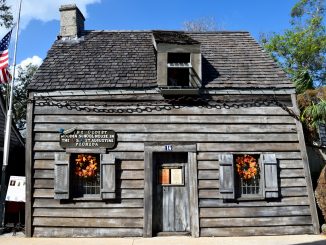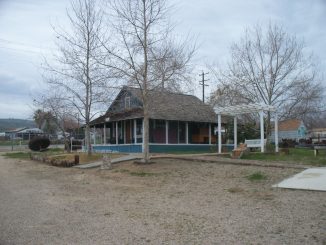

Established by the U.S. Congress and signed into law by President Ulysses S. Grant on 1 March, 1872, Yellowstone National Park was the first National Park in the United States. Located in Wyoming, Montana, and Idaho, Yellowstone is known around the world for its beauty, natural wonders, and wildlife. The subalpine forests of Yellowstone are the most recognizable ecosystem of the park but is only one of a variety of them located within the large park. With an area of 3,468 square miles (8.983 km2) Yellowstone is one of the largest protected sites on the planet.
In 1917 the one year old National Park Service took over the administrative duties of the park and began building many small structures that are still standing and recognized themselves as historic sites. The buildings erected by the National Park Service are protected for their historical and architectural significance. Researchers have examined more than 1,000 archaeological sites at Yellowstone.

Native Americans have lived in the region of Yellowstone park for more than 11,000 years and along with the breathtaking wildlife were the only inhabitants till the mid 19th century. Exploration of the region did not begin till the late 1860s and management of the park by the Secretary of the Interior did not begin till 1886.
Yellowstone lake is likewise one of the largest high-elevation lakes in the United States and centered directly over the Yellowstone Caldera which is the largest supervolcano on the North American continent. Considered to be an active volcano, the Yellowstone Caldera is responsible for many of the geological features of the park. Lava flows and rocks from previous volcanic eruptions cover most of the land currently protected by the parks boundaries. Because of its early protection by the United States Congress, Yellowstone’s Greater Yellowstone Ecosystem is the largest remaining intact ecosystem in the Earth’s northern temperate zone.
French trappers in the late 18th century started calling the region Roche Jaune (Yellow Rock), and following American trappers used the simple translation of the French to call the region Yellow Stone. It is commonly accepted that the name for the region is literally because there were yellow rocks there.
The history of Native Americans in the region began 11,000 years ago when they started hunting and fishing in the region. In the 1950s, when construction in Gardiner, Montana was undertaken there were Clovis culture obsidian projectile points discovered. This particular type of obsidian weapon is common in the region but they were made with the volcanic obsidian from this region. This is on particular interest because many of these Clovis obsidian tools have been found as far away as Mississippi. Shoshone, Nez Perce, and Crow tribes of Native Americans were encountered in the region during the Lewis and Clark expedition in 1805. These tribes told stories about the Yellowstone region just to the south of where the expedition was located but they were not immediately investigated. It was John Colter, a member of the expedition that first passed through the region in 1806 after working briefly as a trapper.
Yellowstone Facts
- A forest fire in 1988 destroyed nearly one third of the park
- Yellowstone is home to the largest and oldest public bison herd in the United States
- Established on 1 Mar 1872, Yellowstone is the world’s first national park
- The park is 1% in Idaho, 3% in Montana, and 96% in Wyoming
- Yellowstone sees between 1,000 and 2,000 earthquakes a year
- The highest peak in the park is Eagle Peak at 11,358 feet (3,462m)
- There are more than 1,000 miles of trails inside the park
- Old Faithful Geyser erupts roughly every 92 minutes
Travel Tips
- Go to Old Faithful Geyser in the early morning or evening. It is the most visited site at the park and can get very crowded.
- Get out of the car and take a hike. There are miles and miles of trails and the best way to see and the further you get from traffic the more wildlife you will see.
- The best time to see Yellowstone Lake is while everyone is at the geyser. Go in the afternoon.
- If you want to see the stars this is the place. There is little light pollution and plenty of trails Yellowstone has some of the best views of the night sky in the United States.
- Take a flashlight of headlamp. Since there is little light pollution there is little unnatural light and it gets very dark.
- Wear layers and take clothes for all seasons. Overnight lows can be close to freezing and daytime highs can be in the 80s. In the same day.
- Take binoculars. Getting away from traffic will bring you closer to wildlife but wildlife will sometimes try to kill you. Stay a safe distance from animals.


